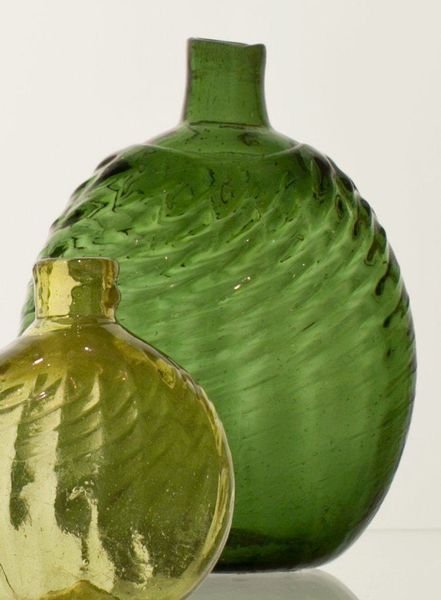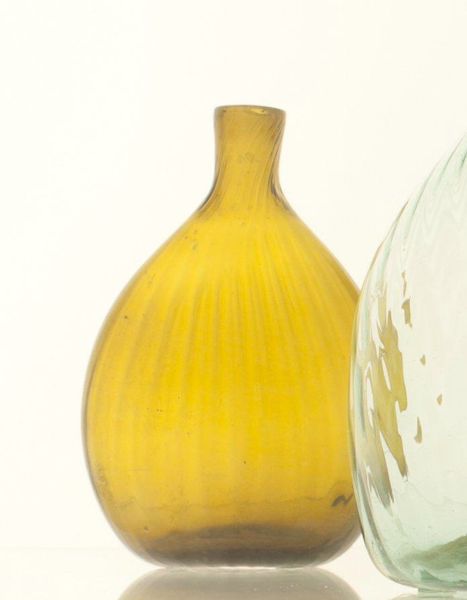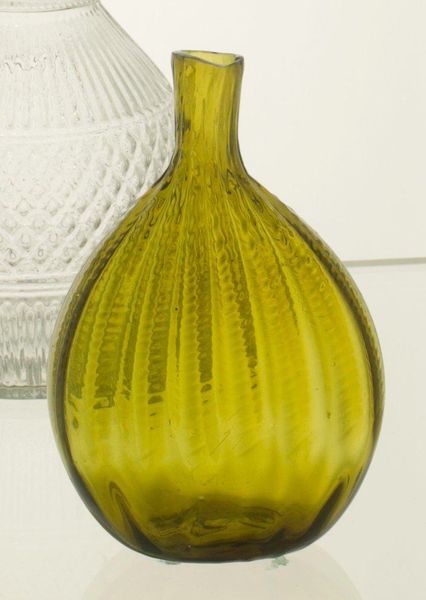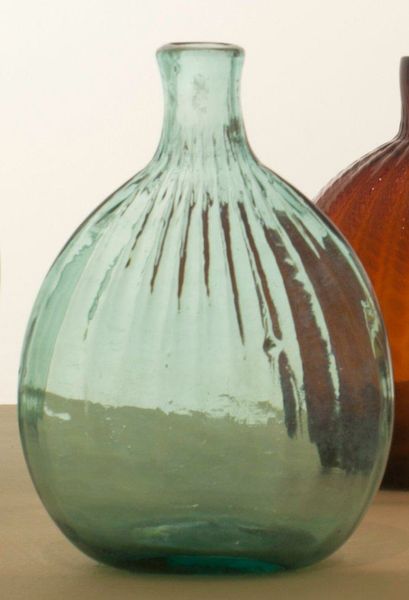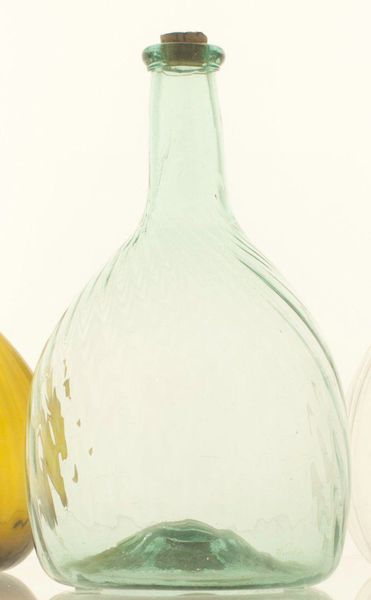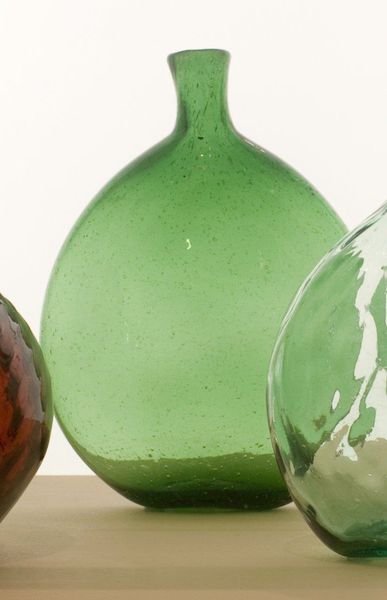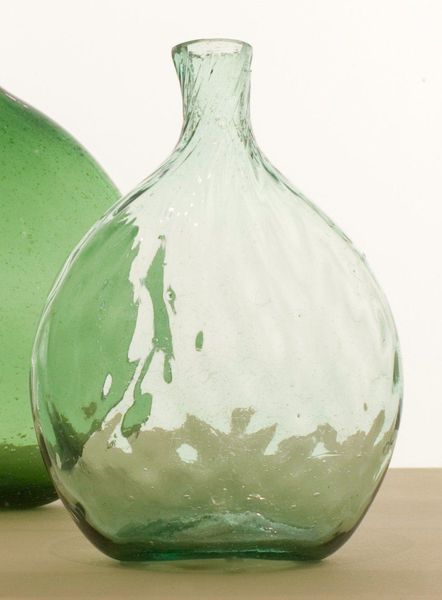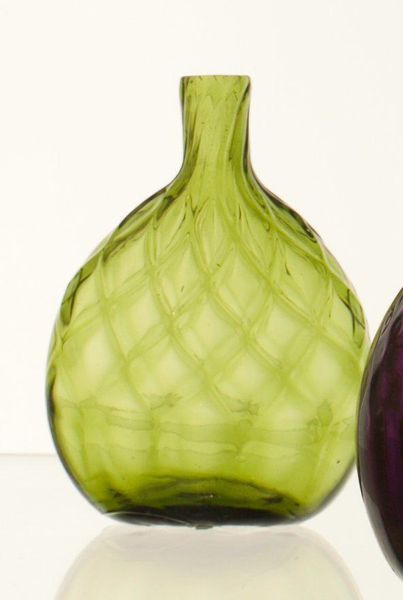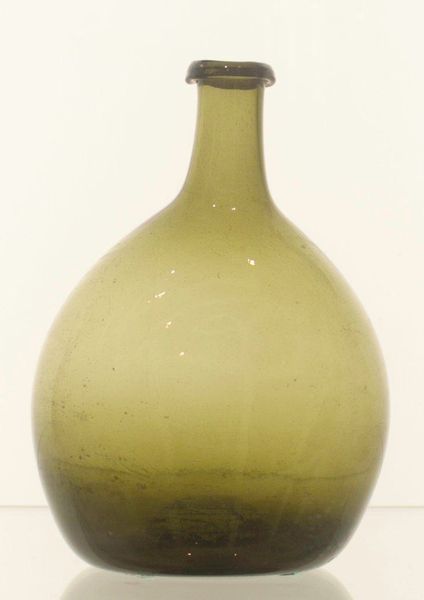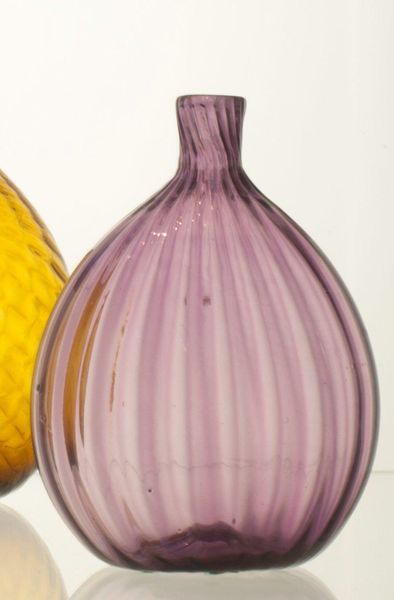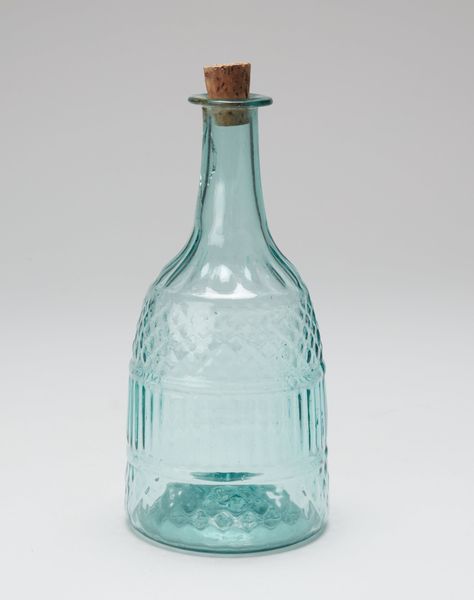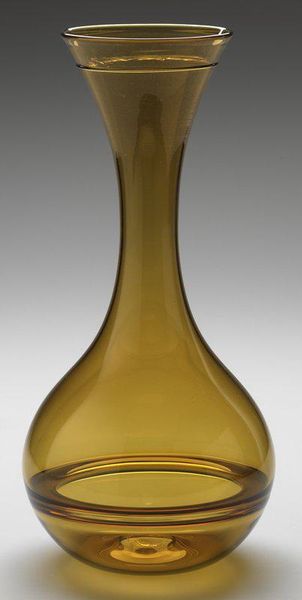
photography, glass
#
photography
#
glass
#
ceramic
Dimensions: 6 3/8 x 4 5/8 x 2 1/2in. (16.2 x 11.7 x 6.4cm)
Copyright: Public Domain
Editor: Here we have the Pitkin Flask, likely from the 19th century, crafted in glass. I’m struck by the swirling patterns within the glass itself – they seem to animate the form. What do you make of its visual presence, its fundamental aesthetics? Curator: Indeed, the manipulation of the molten glass to achieve that spiraling effect is technically remarkable. Note how this imbues the otherwise simple, rounded shape with a dynamic tension. Are those lines surface decorations or integral to the structure itself? Editor: I believe they're part of the glass, made during its creation. Do you think this manipulation enhances the function, or is it purely aesthetic? Curator: Functionally, it adds little. Formally, though, the spiraling disrupts the otherwise smooth surface, playing with light and shadow in intriguing ways. It underscores the inherent properties of the material, highlighting its fluidity and malleability during creation. Consider the vessel’s volume; does the spherical body achieve a certain visual balance? Editor: I do find the round shape very appealing, though it also makes me wonder how stable it would be on its own. The design feels intentional, even with the glass appearing somewhat uneven. Curator: The asymmetry is crucial. Its presence prevents the form from becoming static, from achieving perfect, perhaps boring, symmetry. The irregularities catch the light in unexpected ways. Are the chromatic variations significant? Editor: I notice a subtle shift in tone, deepening towards the base. So you're saying it is not merely about its utility, but its textural, chromatic interplay and imperfect design? Curator: Precisely. The flask becomes a study in form, light, and material transformation. Focusing on these visual aspects grants us insights into the craftsmanship and aesthetic considerations that went into its creation. Editor: That’s helped me appreciate its complexity. It is about the method as much as the resulting product. Curator: A closer inspection truly enhances understanding.
Comments
No comments
Be the first to comment and join the conversation on the ultimate creative platform.
